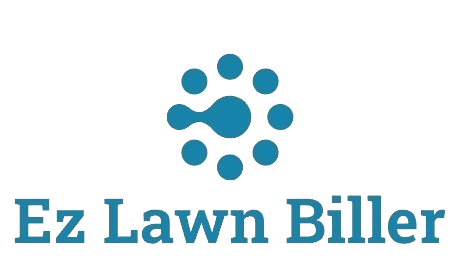Maximize efficiency and profit for your lawn care business with route optimization strategies that enhance service delivery and customer satisfaction.
How to Optimize Routes for Your Lawn Care Business
Optimizing routes is essential for lawn care businesses seeking to increase efficiency, reduce operational costs, and improve customer service. This blog post will explore effective strategies for route optimization, including the use of technology, planning techniques, and the importance of customer communication. We’ll also provide practical tips on implementing these strategies to enhance your service delivery and client satisfaction.
In the competitive world of lawn care, business owners must find ways to maximize efficiency and minimize costs. One critical aspect of this is route optimization. By carefully planning the routes taken by your service teams, you can save time, reduce fuel expenses, and improve overall customer satisfaction. In this article, we will delve into the significance of route optimization for lawn care businesses and cover useful strategies to implement in your operations.
As you explore the intricacies of optimizing routes, you’ll discover several key elements that play a role in successful implementation. These include geographical considerations, the use of specialized software, and maintaining open lines of communication with your clients to ensure timely service. By the end of this post, you will have a comprehensive understanding of how route optimization can transform your lawn care business.
The Importance of Route Optimization
Route optimization is not just about saving time; it’s about enhancing the overall efficiency of your lawn care business. According to various studies, companies that optimize their routes can see reductions in fuel costs by up to 30 percent. For a lawn care business, where fuel costs can significantly impact profitability, this is a substantial saving.
Moreover, optimized routing leads to improved customer satisfaction. When your service team arrives on time and completes jobs efficiently, customers are more likely to remain loyal and refer your services to others. This is particularly crucial in cities such as Denver, where the lawn care market is highly competitive. By optimizing routes, you can better manage your schedule and meet client expectations.
Utilizing Technology for Route Optimization
In today’s digital age, technology plays a pivotal role in optimizing routes. Lawn care businesses can leverage various software solutions to streamline their operations. Tools like GPS tracking systems and route optimization software can greatly enhance efficiency. These systems automatically calculate the best routes based on real-time traffic data and geographical considerations.
For example, using a platform like EZ Lawn Biller, lawn care businesses can not only manage their billing but also track routes and service schedules. This integrated approach allows for a more holistic view of operations, enabling business owners to make informed decisions about scheduling and resource allocation.
Planning Your Routes Effectively
Effective route planning is essential for maximizing efficiency. Start by grouping jobs that are geographically close to one another. This minimizes travel time between jobs and maximizes productivity. For instance, if you have several clients in the same neighborhood in Chicago, scheduling them back-to-back can save valuable minutes that add up over the course of the day.
Additionally, consider the type of services you provide. For example, a lawn mowing service may require different routing than one that includes fertilization or aeration. Adjusting your routes based on the services needed can lead to more efficient operations. Regularly review your routes and adjust them according to changing client needs and seasonal factors.
Maintaining Open Communication with Clients
Communication is key when it comes to optimizing routes. Keeping your clients informed about service times and any changes to their schedules can greatly enhance customer satisfaction. By sending notifications about estimated arrival times through a system like EZ Lawn Biller, you can ensure that your clients are prepared and available for your team.
Moreover, soliciting feedback from your clients can help you identify areas for improvement. If clients are consistently unavailable during certain times, it may be worth re-evaluating your scheduling strategy. This proactive approach not only enhances efficiency but also builds stronger relationships with your clientele.
Implementing a Feedback Loop for Continuous Improvement
To capitalize on route optimization, implement a feedback loop within your business operations. After each service, encourage your team to report on the efficiency of the routes taken. Were there unexpected traffic delays? Did they encounter any issues that could be avoided in the future? Gathering this information allows you to refine your routes continuously.
Additionally, consider utilizing performance metrics to evaluate route efficiency. Metrics such as time spent on the road versus time spent on service can help identify bottlenecks in your operations. By keeping track of these statistics, you can make data-driven decisions that lead to further optimization.
Leveraging Seasonality in Route Planning
Understanding seasonal trends can play a significant role in route optimization. Lawn care services fluctuate throughout the year, and being aware of peak seasons allows you to plan your routes more effectively. For instance, during spring and summer months when demand is high, increasing the number of routes available can help accommodate more clients.
Conversely, in the fall or winter, when demand typically decreases, you may need to adjust your routes to focus on fewer clients or offer specialized services such as leaf removal or winterization. Seasonal adaptability can ensure that your lawn care business remains profitable year-round while optimizing routes accordingly.
Conclusion
In conclusion, optimizing routes for your lawn care business is a multifaceted strategy that can lead to significant improvements in efficiency, customer satisfaction, and overall profitability. By leveraging technology, planning effectively, and maintaining open communication with clients, you can streamline your operations and enhance service delivery.
The importance of route optimization cannot be overstated; it is a vital component of successful lawn care management. As you implement these strategies, remember to continually assess and adapt your approach based on performance metrics and client feedback. Start optimizing your routes today, and watch your lawn care business flourish!




